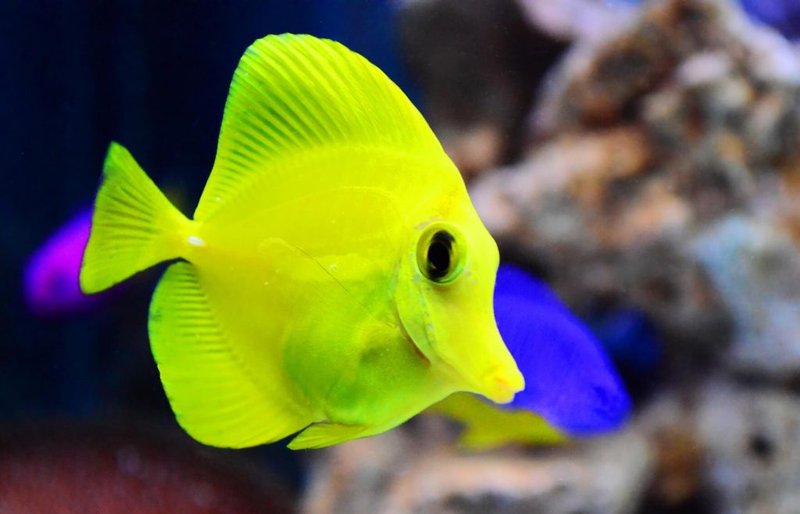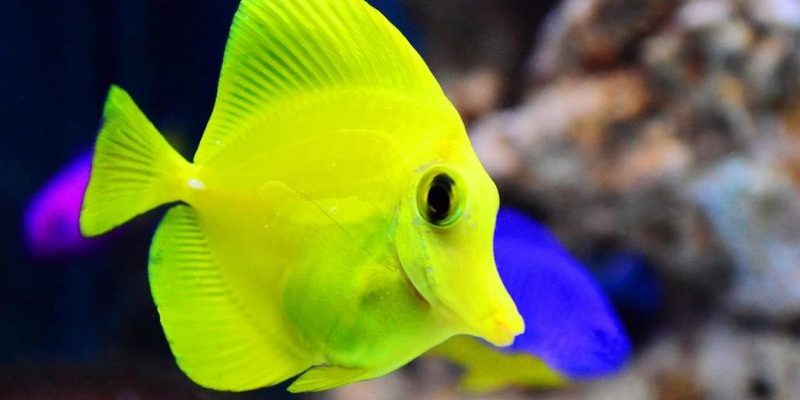
Now, you might be wondering what exactly these fish need to thrive. It’s a bit like setting up a new home for a friend: you want to ensure they have enough space, the right environment, and the comforts they’re used to. In this article, we’ll dive into the specifics of tank size, salinity, and temperature to help you create the perfect living space for your Yellow Tang.
Ideal Tank Size for Yellow Tang
When considering a tank for your Yellow Tang, size truly matters. These fish are known for their active swimming and exploring. A cramped space can stress them out, leading to health issues. Ideally, you should aim for a minimum tank size of 75 gallons.
Why so much space? Picture a dance floor—if it’s too small, everyone bumps into each other and gets on each other’s nerves. A larger tank gives your Yellow Tang room to swim freely and explore without feeling confined. If you plan on keeping more than one tang or other vibrant fish, opt for an even larger tank (at least 100 gallons) to ensure everyone has their own space.
Why a Bigger Tank Matters
When a Yellow Tang has room to roam, it encourages natural behaviors. They love to graze on algae and establish territories. A tank that’s too small can lead to aggression, which is the last thing you want in your aquarium. Additionally, a larger tank promotes better water quality, as it dilutes toxins and creates a healthier environment.
Here’s the thing: if you’re investing in a beautiful Yellow Tang, why not give it the best home possible? A larger tank not only benefits your fish but also enhances the overall aesthetics of your aquarium.
Salinity Levels for Yellow Tang
Now, let’s talk about salinity. The salinity of your aquarium water should mimic the natural ocean environment of the Yellow Tang, which typically thrives in waters with a salinity of 1.020 to 1.025 specific gravity. This range is crucial for their health and well-being.
Maintaining proper salinity is like ensuring the right flavor in a delicious dish. If it’s off, the whole experience can be ruined. Using a reliable hydrometer or refractometer to measure salinity levels will help you keep an eye on things. Adjusting salinity should be done gradually to avoid shocking your fish.
How to Maintain Proper Salinity
– Regular Testing: Test the water at least once a week. This way, you’ll catch any sudden changes before they affect your Yellow Tang.
– Water Changes: Regular water changes can help maintain stability. Aim for about 10-15% of the tank water replaced weekly.
– Mixing Salt: When you’re mixing saltwater for a water change, always use aquarium-specific salt. This ensures it has the right balance of minerals.
Monitoring salinity might seem tedious, but it’s key to keeping your fish vibrant and healthy. After all, a happy Yellow Tang means a stunning centerpiece in your home!
Temperature Requirements for Yellow Tang
Temperature is another essential factor in creating a healthy environment for Yellow Tangs. They thrive in warmer waters typically found in the Pacific Ocean, with an ideal temperature range between 75°F and 80°F (24°C – 27°C).
Think of temperature as the cozy blanket that keeps your fish comfortable. If it’s too hot or too cold, your fish can become stressed, leading to illness. To keep the temperature stable, invest in a reliable aquarium heater and a thermometer to monitor the conditions regularly.
Why Temperature Stability Is Important
Rapid temperature fluctuations can be harmful, so it’s best to keep the temperature consistent. Here are a few tips to help maintain stable temperatures:
– Use a Quality Heater: Make sure your heater is powerful enough for your tank size and has good reviews for reliability.
– Check Regularly: Monitor the temperature daily, especially during seasonal changes, to catch any fluctuations early.
– Avoid Direct Sunlight: Keep your tank out of direct sunlight to prevent overheating, and consider using a fan or air conditioning during hot weather.
Remember, providing your Yellow Tang with a stable and warm environment is crucial for their health. A comfortable fish is a happy fish!
Filtration and Water Quality
While we’ve covered size, salinity, and temperature, it’s important not to overlook water quality. Filtration plays a huge role in keeping your tank clean and your Yellow Tang thriving. A good filtration system will help remove toxins and debris from the water, creating a healthy and stable environment.
A protein skimmer is also a fantastic investment for marine tanks, especially if you have a heavily stocked aquarium. It removes organic waste before it breaks down into harmful substances.
Choosing the Right Filter
– Canister Filters: They’re versatile and can handle larger tanks well. They’re typically quiet and can be hidden easily.
– Hang-on-Back Filters: These are budget-friendly and easy to set up. Just make sure they are rated for the size of your tank.
– Sump Systems: If you’re really diving into the hobby, a sump can provide excellent filtration and extra water volume.
Regularly monitor your water parameters, and perform weekly tests for ammonia, nitrite, nitrate, and pH levels. Keeping the water clean and healthy is crucial for preventing disease and keeping your Yellow Tang chirpy and vibrant!
Creating the ideal habitat for your Yellow Tang involves understanding their specific needs in terms of tank size, salinity, and temperature. By providing a spacious, clean, and warm environment, you’re setting up your fish for long-term happiness and health. Plus, you get to enjoy watching them thrive in a beautiful, well-maintained aquarium.
Honestly, investing the time and effort to nail down these requirements will pay off when you see your Yellow Tang swimming happily around its surroundings. It’s worth every bit of attention. So, grab your gear, test your water, and get ready to welcome a splash of sunshine into your home!

